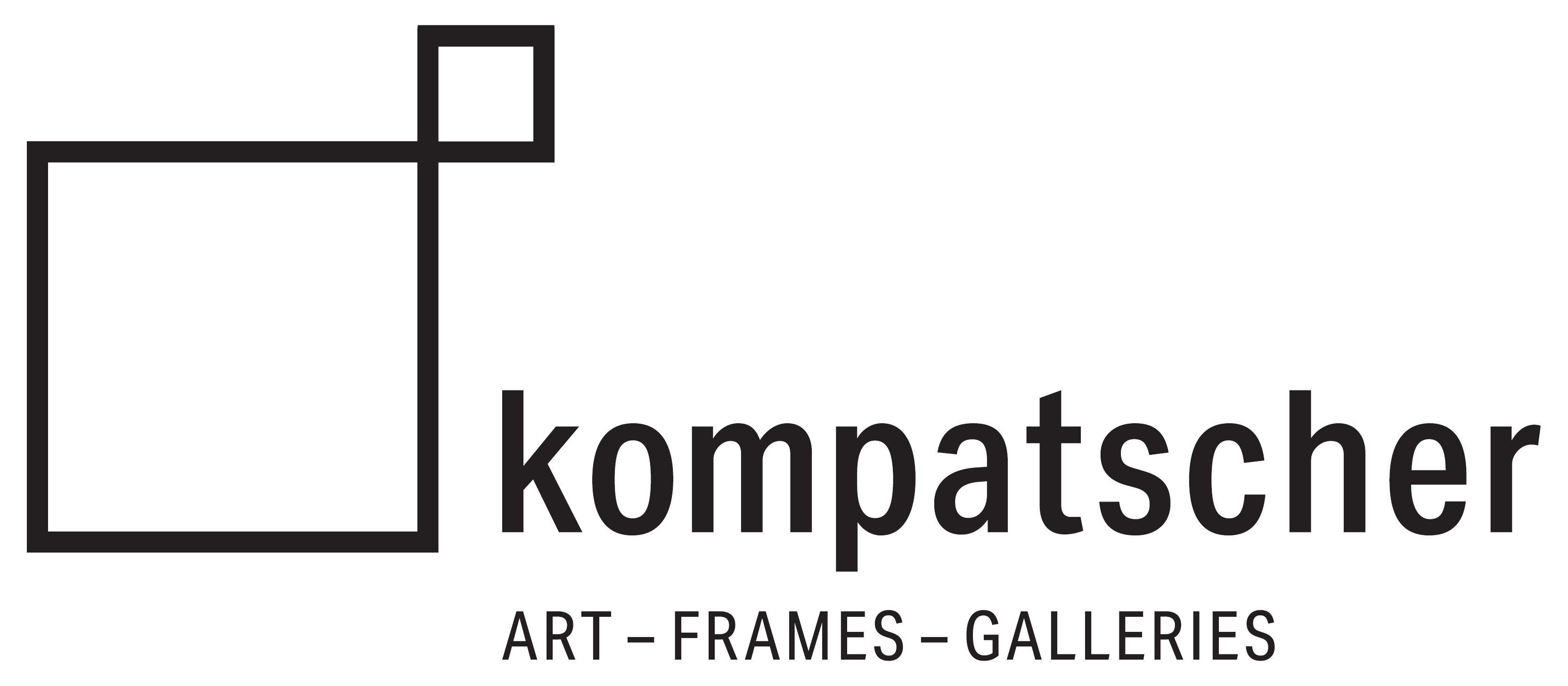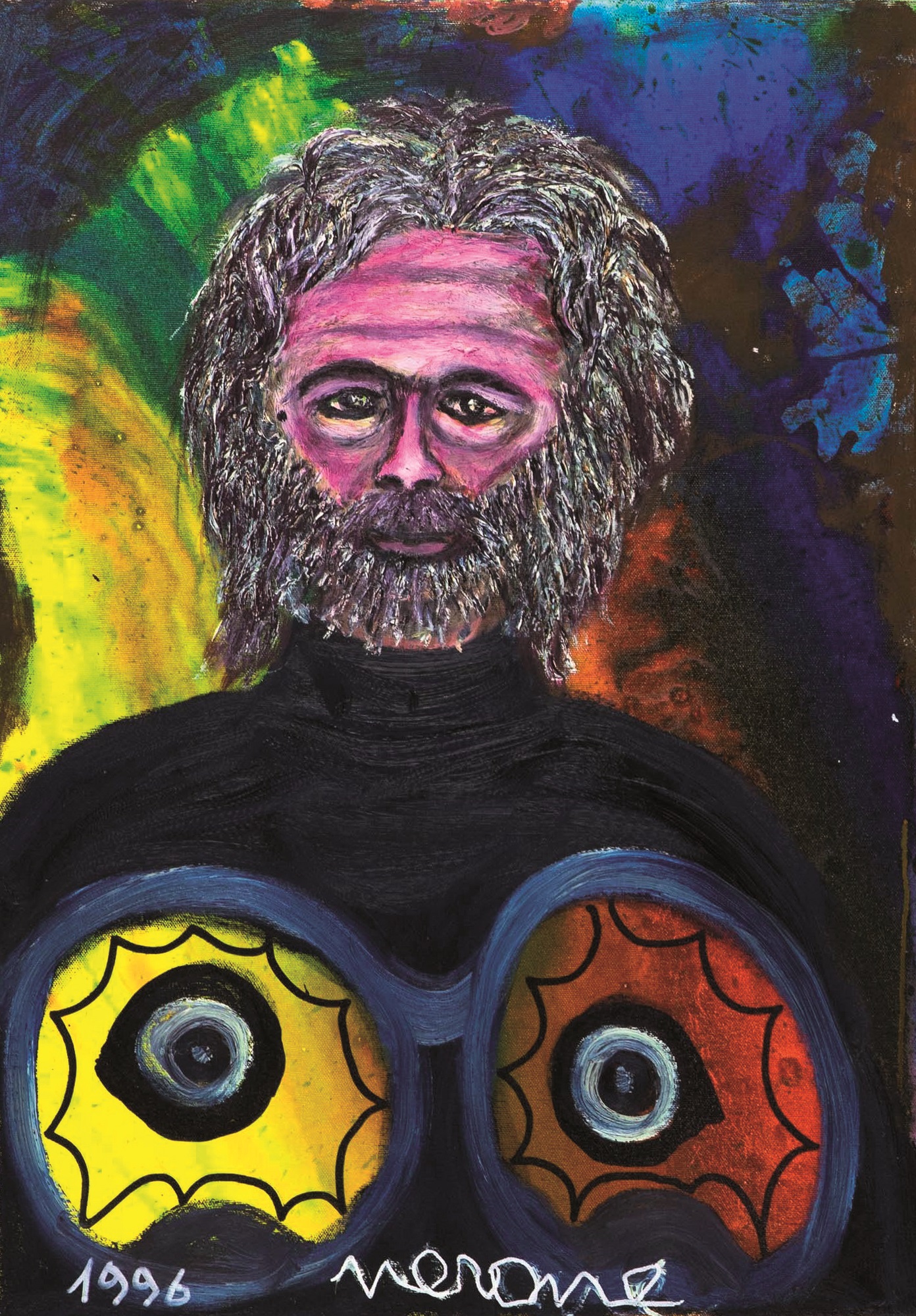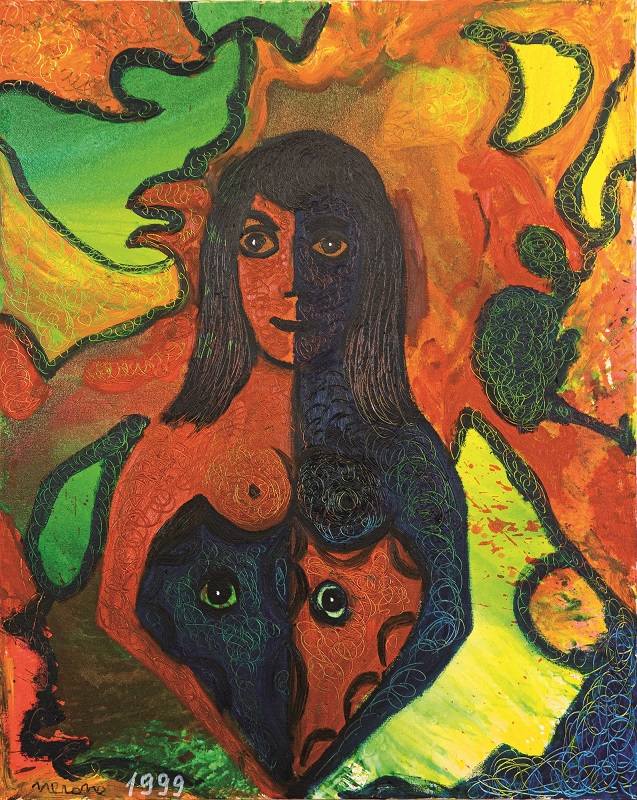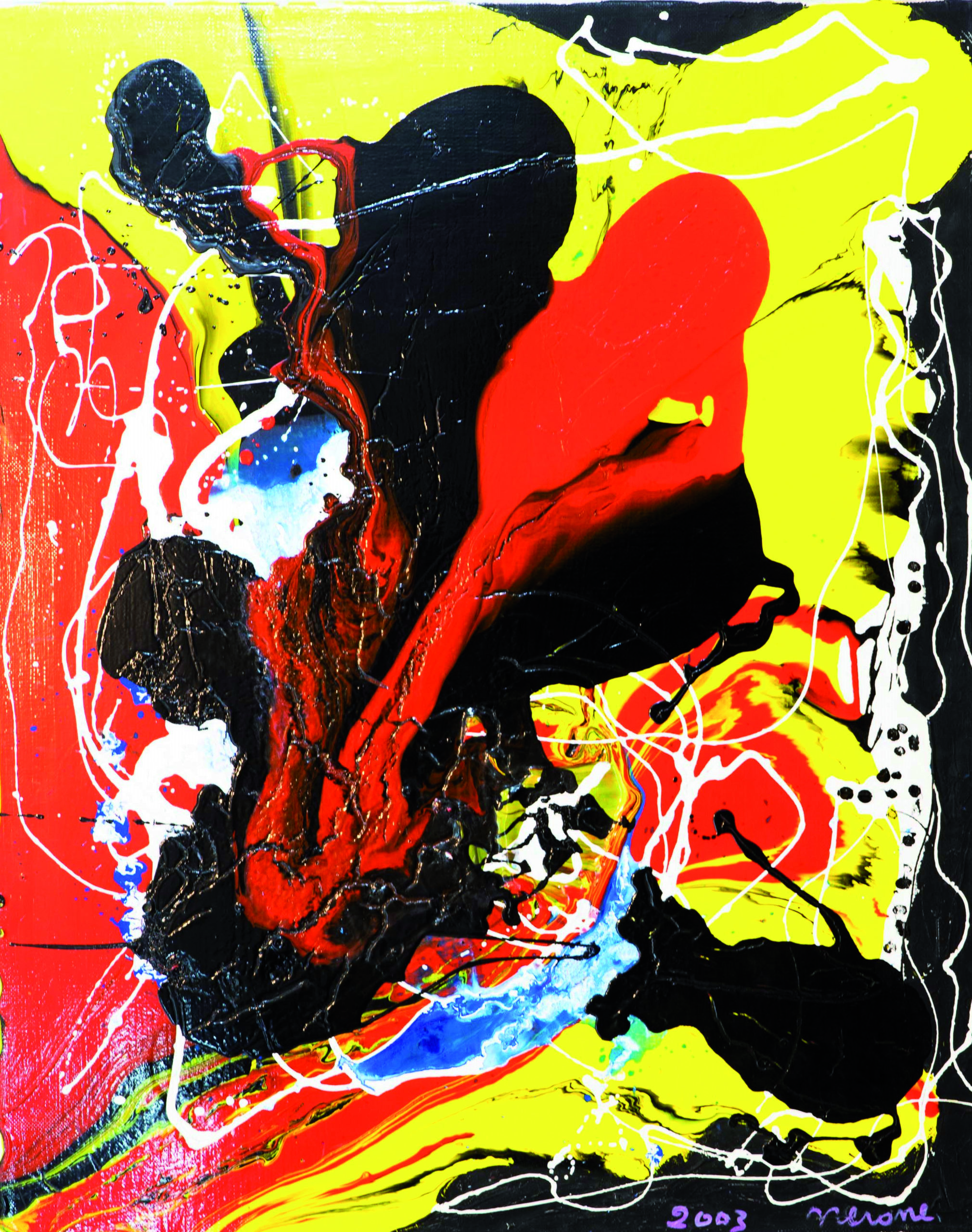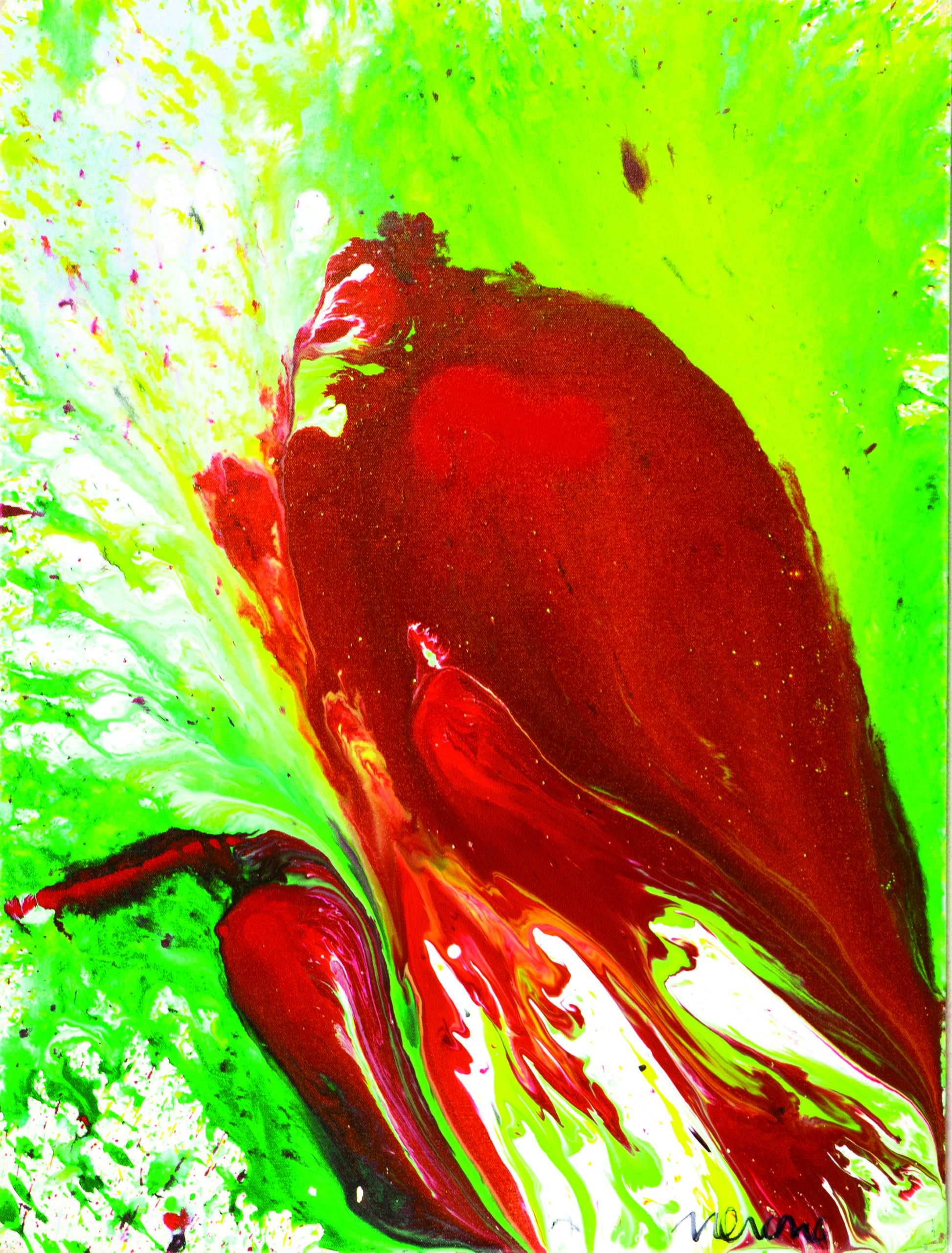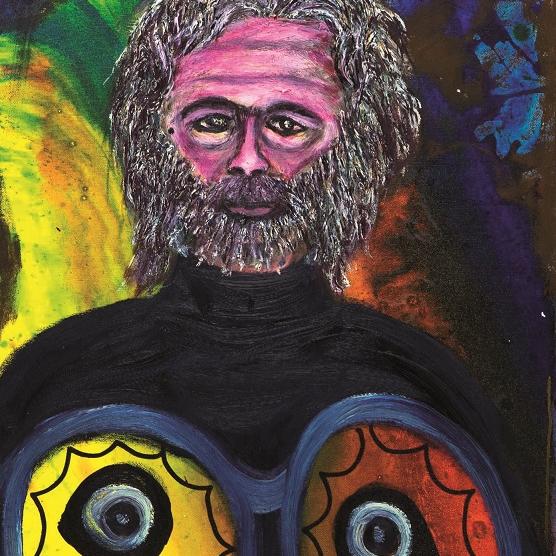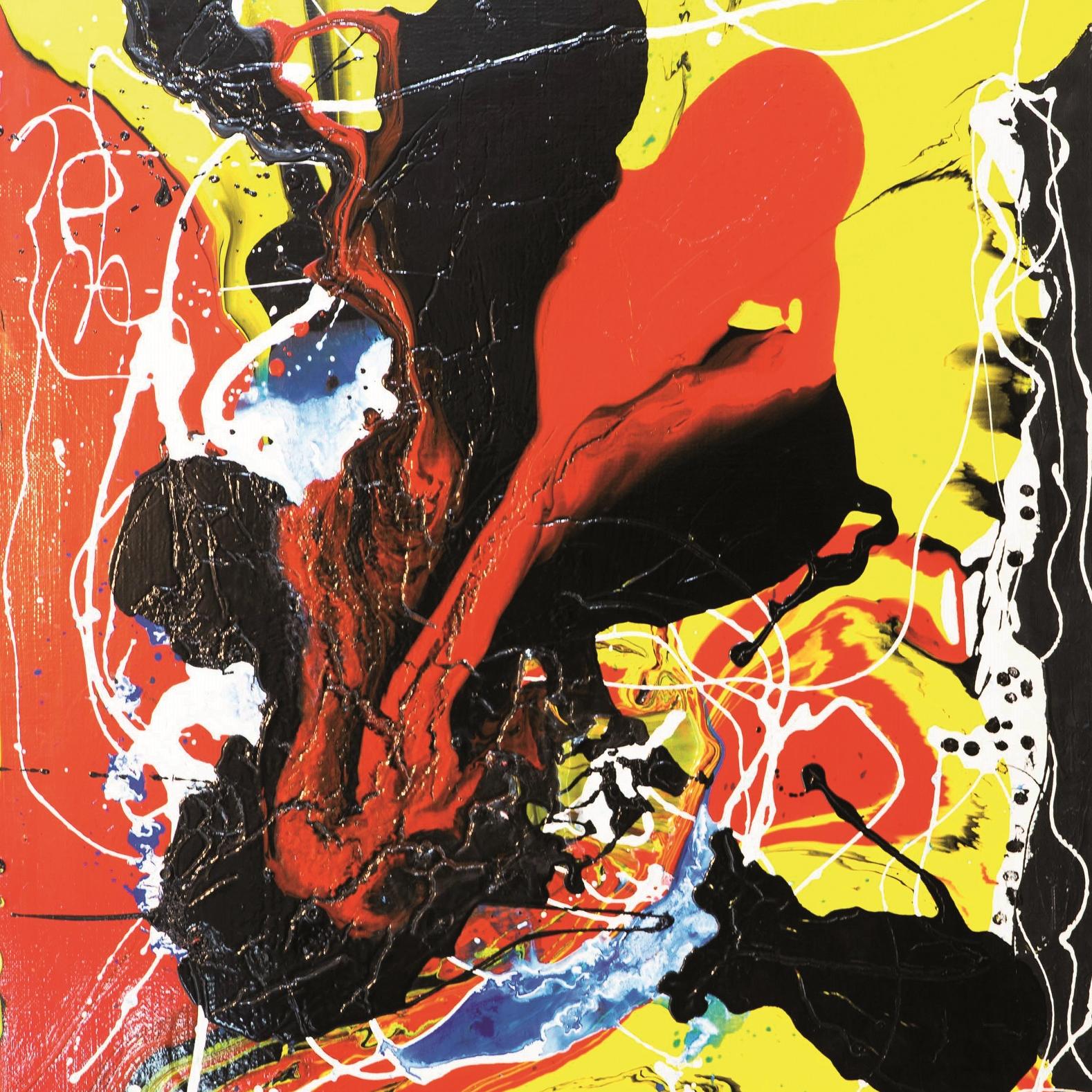Nerone
NERONE, Sergio Terzi (b.1939), is a painter, sculptor, writer, poet and musician. His life has been challenging to say the least: the oldest of seven children who grew up in poverty with an alcoholic and abusive father, he later also became alcoholic, eventually recovering from the disease. His challenging childhood allowed the true essence of his soul to emerge, and this is visible in all his works. Through his art he was able to metabolise the negativity of his existence.
Autodidact, he started painting at the age of thirty. The creation of each and every one of his artworks has always been, is and always will be a way to release deep-rooted emotions which stir up inside and are best let out through his ability of creation.
His mentor, Antonio Ligabue, was one of the most important Naïve artists of the 20th century. Nerone lived with him in the last period of his life and was his last driver before his death.
Nerone began painting characters from the Po Valley, faces marked by fatigue and the despair of not being able to feed their children. He painted animals with a terrified look, open jaws and sharp claws, wild beasts, that were actually the expression of his own discomfort, of his suffering accumulated in years of frustration.
As time went by, Nerone’s painting evolved. His paintings started to show sunny fields, full of the light that shines on a nature offended by progress.
His first solo exhibition is dated 1973 at the Galleria Zanardelli (Concordia-Modena). He later exhibited in numerous Italian and foreign galleries. Many critics started showing interest in his art and his fame started growing.
America noticed him and in September 26, 1966, he received an award from the Metropolitan Museum of Art in New York, for his distinguished artistic career, by Governor G.E. Pataki. On his return he was welcomed by the tragic and harsh reality: his wife was suffering from Alzheimer. At this point Nerone’s art deals with a metamorphosis, goes towards abstractionism, moving away from the representation of real life. He began to produce informal works of art composed mainly of enamels, with strong and decisive colors, an innovative and well-defined technique. A new, powerful style that immediately captures the viewer’s attention with amazing results mainly because of the ability that the artist has in mastering color.
